Changing Video Background Color in Filmora Guide
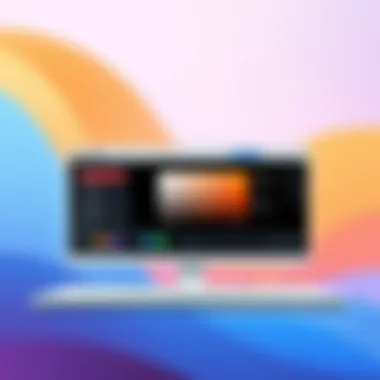
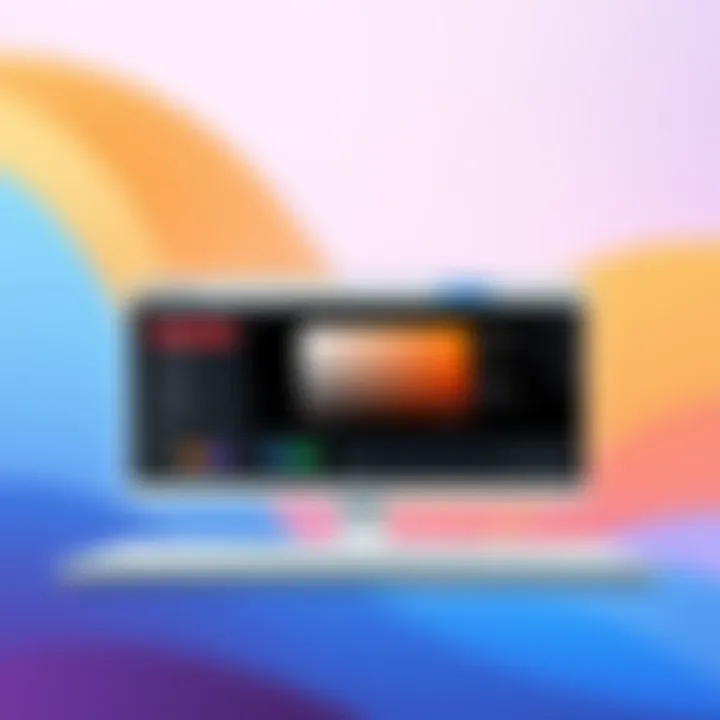
Product Overview
Changing the background color of videos is a powerful tool that vastly enhances the visual impact of your projects. Filmora stands out in the realm of video editing applications, allowing users to execute this task with impressive efficiency.
Key Features and Specifications
Filmora provides a user-friendly interface that simplifies complex editing tasks. Some key features include:
- Chroma Keying: Essential for background color change; this function allows users to select and remove specific hues.
- Layering Tools: Users can stack multiple video tracks for more intricate designs.
- Color Matching: This feature can help achieve a consistent look across different clips, a necessity when changing background colors.
- Real-time Preview: Instant feedback lets editors see the changes as they're made, making the editing process seamless.
Moreover, its system requirements are modest compared to some high-end editing software, making it accessible for most computers.
Performance and User Experience
When it comes to performance, Filmora shines, especially in rendering times. The application is optimized for a smooth experience, even on mid-range devices. It supports 4K video editing, though this can slow down lower-powered machines.
User Interface and Ease of Use
The layout is intuitive, allowing even beginners to navigate without much trouble. Each feature is prominently displayed, making it easy to locate tools. For example, the Chroma Key option can be found right in the editing panel, which reduces the time spent searching for commands.
Comparison with Similar Products
Compared to other video editing platforms like Adobe Premiere Pro or Final Cut Pro, Filmora maintains a balance between functionality and simplicity. While those alternatives may provide more advanced features, they often come with steep learning curves and higher system requirements. Filmora, in contrast, is ideal for users who want creativity without a deep dive into technical details.
Design and Build Quality
Filmora has a sleek, modern design that is visually appealing. The color palette is soft on the eyes, while its icons are designed for clarity.
Materials Used and Durability
Being software, there are no physical materials to assess. However, its performance stability speaks volumes about its reliability. Regular updates ensure that the software keeps pace with user needs and technological advances.
Ergonomics and Aesthetics
The ergonomic design contributes significantly to the overall user experience. The interface is structured in a way that makes it easy to edit long videos, with sections clearly delineated to avoid confusion.
Technology and Innovation
Filmora incorporates several innovative features that set it apart from other video editing software. The real-time editing option allows for immediate adjustments which foster a more dynamic creative process. Furthermore, its cloud integration means you can work on projects from multiple devices.
Potential Impact on the Consumer Tech Industry
As the video editing landscape evolves, Filmora's focus on accessibility could redefine industry standards. It’s redefining who can be a content creator, removing barriers to entry that used to be prevalent in video editing.
Future Trends and Developments
Expect Filmora to continue integrating AI-powered tools for smarter editing options. As technology progresses, tools may be designed to analyze footage and suggest edits or enhancements.
Pricing and Value Proposition
Filmora offers several pricing tiers, making it affordable for a wide range of budgets. Whether you are an amateur creator or a professional editor, there’s a plan that can accommodate your needs.
Pricing Details and Affordability
The basic plan is reasonably priced, while the Pro version provides advanced features like more effects and full HD export options.
Comparison of the Product's Value with Its Competitors
In terms of value, Filmora often undercuts its competitors, making it a great choice for those who want performance without breaking the bank.
Recommendations and Final Verdict
In closing, if you’re looking to enhance your videos with background color changes without getting lost in a complex labyrinth of features, Filmora is definitely worthy of your consideration. It walks the line between user-friendly and powerful, proving to be an indispensable tool for anyone aiming to elevate their video game.
"Mastering the art of video editing starts with choosing the right tools. Filmora proves to be a reliable companion in this creative journey."
For further resources, check out Wikipedia and Britannica. Whether you're a hobbyist or a professional, Filmora can deliver the capabilities you require to make your vision come to life.
Understanding Filmora's Capabilities
When navigating the world of video editing, it's crucial to grasp the tool at your disposal. Filmora stands out in this arena for its user-friendly interface and robust capabilities. Understanding how to effectively utilize these features can dramatically improve your editing workflow and the quality of your final product.
Why Filmora?
Filmora offers a seamless experience for both novices and experienced editors. Its intuitive design allows users to dive into projects without getting overwhelmed. The layout is organized, which means you can find tools quickly without hunting high and low. The timeline's clarity lets you arrange your clips and effects with ease, making it a joy to work on, whether you're making a quick home video or a detailed vlog.
Overview of Filmora's Interface
Filmora's interface is designed for simplicity and accessibility. The first thing you notice upon launching the application is the clean workspace. The main areas include the preview window, media library, timeline, and tool options. This setup is not just for show; it reflects careful consideration of user experience.
- Preview Window: This shows what the final video will look like as you edit. You can play, pause, and scrub through the footage here.
- Media Library: Store all your clips, music, and images in one place. You can also easily drag and drop items into the timeline.
- Timeline: This is where the magic happens. Arrange your video clips, add effects, and trim portions to create your desired sequence.
Filmora’s interface allows for customization, so you can adjust the layout to suit your editing style. This flexibility can really enhance productivity.
Key Features for Video Editing
What makes Filmora a go-to choice for so many editors? It comes packed with features that cater to various editing needs:
- Drag-and-Drop Editing: The simplicity of dragging elements onto the timeline speeds up your workflow, making it more fluid and efficient.
- Extensive Library of Effects: With both built-in transitions and effects, you have a myriad to choose from, perfect for giving your videos a professional sheen.
- Color Correction Tools: These allow for nuanced editing to adjust brightness, contrast, and saturation, essential when you want to change background colors.
- Audio Editing Features: Seamless integration of audio tools means you can balance sound, apply effects, and even use voiceovers without needing a separate program.
- Export Options: Filmora supports a variety of formats, ensuring your final product is ready for any platform, be it YouTube or social media.
By understanding these capabilities, you position yourself to make the most out of Filmora, enhancing not only your editing skills but also the overall quality of your projects.


"Knowing your tools is half the battle in video editing; the other half is creativity and story-telling."
As you see, diving deep into these capabilities lays the groundwork for a solid grasp of how to change background colors effectively, among other editing tasks. When you know what Filmora can do, implementing these functions becomes an exciting challenge rather than a daunting task.
The Importance of Background Color in Video Editing
Changing background color in video editing is not just a whim, but rather a strategic decision that affects the whole visual narrative of your project. In a world where first impressions matter, the colors chosen for your videos can shape how viewers perceive and react to the content. It’s akin to framing a painting; the colors that surround your main subject can elevate or diminish its overall impact. Thus, understanding this concept is paramount for anyone looking to craft compelling visuals.
One cannot underestimate the subtlety of color; it has the power to evoke emotions, highlight key elements, and even guide the viewer’s eye across the screen. Different shades interact differently with the subjects at hand, influencing the mood and atmosphere of your video. When you dive into Filmora, you find tools that allow for fine-tuning these visual elements, aiding in achieving just the right essence you want to convey.
Visual Impact of Color Choices
The visual impact of color choices in video editing is nothing short of transformative. When the right colors are applied, a video can transcend into a different realm of engagement. For instance, a vibrant red background might ignite feelings of passion or urgency, while a cooler blue might evoke tranquility and calmness.
- Attention-Grabbing: Bright and contrasting colors can draw in attention, making important scenes and elements pop out.
- Mood Setting: Seasoned editors leverage colors to set the mood; softer tones often promote relaxation while darker hues can provide a more somber feel.
- Consistency Across Platforms: Harmonizing color choices enhances branding. A consistent color theme makes your content recognizable, a vital aspect in an era overflowing with visual stimuli.
Here are some examples of color effects:
- Warm Colors: Inviting and enthusiastic.
- Cool Colors: Professional and serene.
Aesthetically pleasing content is key to engaging the audience, keeping them glued to their screens. In Filmora, adjusting the background color isn’t just a technical shift; it’s an artistic enhancement.
Color Psychology in Media
Understanding color psychology is essential in the realm of video production. Every hue carries with it intrinsic meanings and associations that have been studied extensively. For instance, yellow often symbolizes happiness and optimism, while green can suggest growth or tranquility. The implications of these associations can be profound.
- Emotional Connection: Editors can tap into audiences’ inherent emotional responses, creating a deeper connection through thoughtfully chosen colors.
- Brand Identity: Colors can define and reinforce brand identity. For example, tech companies might use sleek, cool colors to convey innovation and reliability.
- Social Influences: Colors can vary in meaning across cultures; what’s considered positive in one context might signal something entirely different in another.
Here’s a brief list:
- Red: Passion, danger.
- Blue: Trust, calm.
- Green: Nature, balance.
Keep in mind that the audience’s perception of color can greatly influence how your message is received. Accordingly, it becomes pivotal to select colors that align with the intentions behind your video. In Filmora, integrating the appropriate background color can compel viewers to resonate with your content in a manner that is far beyond mere visuals.
By considering these elements before making adjustments to your video, you not only enhance its aesthetic appeal but also pave the way for a more profound viewer engagement.
Preparation Before Changing Background Color
Before diving headfirst into the intricate world of video editing with Filmora, it's crucial to lay the groundwork. Preparation before changing background color isn’t just a formality; it’s the linchpin that supports the entire creative operation. This phase ensures you’re equipped with the right tools and mindset, keeping errors at bay and streamlining the editing process.
Imagine you’re a chef about to whip up an exquisite dish. You wouldn’t just throw ingredients into a pot haphazardly. No, you’d select the finest vegetables, marinate the best cuts of meat, and have your seasonings lined up. Video editing is no different. Each video’s background color can significantly alter its mood and message, requiring thoughtful consideration and planning.
Selecting the Right Video Clip
Choosing the appropriate video clip stands as the first step in your preparatory phase. Not every clip will work well with every background change. Think about it this way: the backdrop should enhance the narrative, not overshadow it. For example, if you’re working on a serene travel vlog, opting for bright, jarring colors may detract from the tranquil vibe you’re aiming for.
Here are a few tips to help guide your selection:
- Assess the Content: Understand the message or emotion you want to convey. Is it joyful or somber? This will guide you in selecting background colors that complement the theme.
- Resolution Matters: Ensure that your video has adequate resolution. A high-resolution video effectively retains quality when altered, whereas low-resolution can look pixelated.
- Consider Lighting: Examine the lighting conditions of your clip. If you have a dark scene, a bright background might make it pop beautifully, but not all contrasts create a harmonious visual.
By choosing the right clip, you lay the foundation for a cohesive project that reflects your creative vision.
Understanding Color Grading Basics
With your clip selected, the next step is grasping color grading basics. This concept, often misunderstood, is pivotal in video editing. While many believe color grading is merely about adjusting hues, it encompasses a broader spectrum of techniques that can profoundly affect your story.
Color grading allows you to:
- Set the Mood: Just like a good recipe, using different color balances can either brighten up a scene or add a layer of depth. Warm colors evoke happiness, while cooler tones can cultivate feelings of calm or melancholy.
- Ensure Consistency: Often, our footage consists of clips taken under varied conditions. An essential part of color grading is ensuring these segments feel like parts of a cohesive entity, avoiding any visual dissonance.
- Enhance Visuals: With color grading, you’ve got the power to add intensity. Increasing saturation can lead to vibrant landscapes, while reducing it could produce a more muted, artistic effect.
To summarize, preparation is a pivotal cornerstone in your video editing journey. Selecting the right clip and understanding the significance of color grading are steps that lead to a polished and professional result:
"Preparation isn't just about planning; it's about optimizing your creative potential before you get to the fun part."
Investing time in these steps creates a more streamlined workflow, ultimately allowing your creativity to shine through. Now that you've set the stage, you’re ready to move on to manipulating your video’s background color with confidence.
Essential Tools Within Filmora for Background Color Adjustment
When diving into the realm of video editing, particularly the subtleties of background color adjustments, having the right tools can mean the world. Filmora provides various options that can empower editors to transform their content into visually striking pieces. But what makes these tools essential? Well, each feature offers unique advantages, paving the way for precision and creativity.
First and foremost, user-friendliness is a significant aspect of Filmora's toolset. Most of these features are crafted with accessibility in mind, making them ideal for both novice editors and seasoned professionals. The intuitive layout guides you through the editing process smoothly, which is particularly important when making intricate changes to background colors.
The tools featured in Filmora are not just about basic color changes; they nestle deeper functionalities that allow for nuanced adjustments. For instance, understanding how to access and manipulate color correction settings can't be overlooked. This skill significantly enhances your final product, capturing the audience's attention right from the get-go.
Furthermore, combining these tools with the right techniques can also lead to a more cohesive visual narrative. This ensures that your editing does not just focus on color but sees your overall intentions and themes come alive through proper use of background colors.
Accessing the Color Correction Features
To get started with adjusting background colors in Filmora, accessing the color correction features is your first port of call. Filmora’s color correction capabilities are straightforward yet powerful enough to cater to more advanced projects. Navigating to these tools involves a quick trip to the editing interface.
- Import your video clip into the timeline.
- Select the clip, then look for the settings icon, which will unveil the editing panel.
- Click on the Color tab — here you'll find an array of options ranging from basic adjustments to more intricate settings.
This section allows you a hands-on approach to manipulate hue, saturation, brightness, and contrast. The real draw is the LUTs or Look-Up Tables, which you can apply with a click to dramatically change the video's aesthetic. This means, whether you're striving for a romantic tone with soft pastels or a vibrant, energetic vibe with bold colors, Filmora has covered the bases well.
Utilizing Filters and Effects
After next selecting your color adjustments, the next step is using filters and effects to enhance your background further. It’s not just enough to change the color; you want it to resonate with the viewer. Filmora's filters can be an excellent method to do just that.
- In the effects library, scroll or search for the filters you want.
- Once you find a suitable effect, drag it over your clip in the timeline. This interaction will apply the effect to the entire video clip.
- You can also adjust the intensity of these effects to suit your desired look, ensuring nothing feels overdone.
Incorporating effects adds a layer of sophistication, enriching the visual experience. It can be as subtle or as dramatic as you like. For instance, a vintage filter might give a nostalgic feel, while a modern filter can help convey a sleek, fresh look. Each choice evokes different emotions, so select wisely.
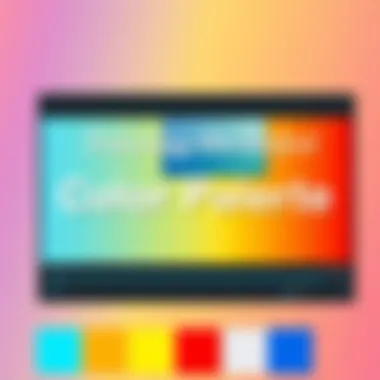
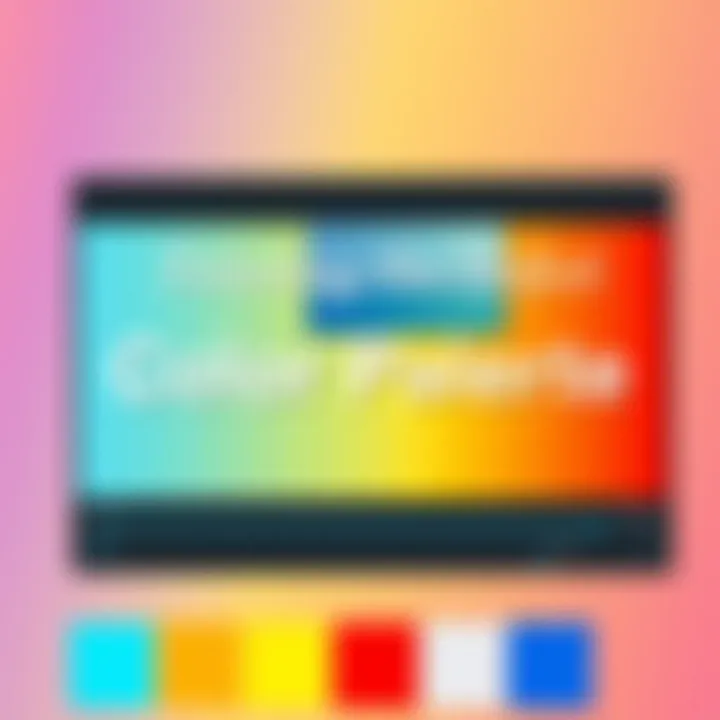
By the end of this process, you should feel equipped to experiment with your videos' backgrounds, understanding that every tool within Filmora was placed there to help you achieve that ideal visual story you are aiming for.
Step-by-Step Process to Change Background Color
Changing the background color of a video is more than just a simple visual tweak; it’s a crucial part of the editing process that can transform the viewer's experience entirely. This section aims to provide a clear path for navigating this feature in Filmora, breaking down each necessary step while emphasizing the significance of precision and creativity in achieving desirable results.
Importing Your Video into Filmora
The first step in the process kicks off with importing your video clip into Filmora. This may seem straightforward, but there are some nuances that can streamline your workflow.
- Launch Filmora on your computer and head straight for the main workspace. Navigate to the Import button located on the upper left corner.
- You can select either Import Media Files to find the video file on your device or drag-and-drop your video directly into the Media Library. This library acts as your digital toolbox, where all your assets are gathered and readily available.
- Once the video is in place, drag it onto the timeline. This is where all the editing magic happens.
By taking these steps, you set a solid foundation for what’s to come. It’s akin to laying the first bricks of a structure; without this base, the additional efforts may falter.
Applying Color Changes to the Background
Once your video is sitting pretty on the timeline, the real fun begins — applying color changes to the background involves a few thoughtful maneuvers. Here’s how to do it effectively:
- With your video selected in the timeline, navigate to the Color tab. This is your gateway to modifying the look of your footage.
- Click on Color Correction, which will open a panel with multiple sliders. Each slider corresponds to various aspects of color — brightness, contrast, saturation, and hue. Here’s where you can play around until you discover the color that resonates with your project’s tone.
- If you want a more dramatic change, consider utilizing the Chroma Key function. This tool allows you to replace a specific color in your video with a new one, transforming a blue sky into a vibrant sunset if that suits your narrative.
- Don’t hesitate to experiment. The beauty of Filmora is that it allows you to adjust these settings dynamically, giving you instant previews of your changes.
Remember: Not all color changes yield a mutually beneficial result with every video. Hence, a thoughtful approach to selecting the right background color is essential. Think of your audience and the emotion you wish to convey.
Previewing Your Edits
Now comes an important yet often overlooked step — previewing your edits. Despite the temptation to rush into exporting your project, pausing to assess your changes can save you from potential headaches later on.
- To preview your edits, simply hit the Play button in the preview window. Watch intently. This visual check allows you to spot any inconsistencies with color transitions or mismatched elements.
- Take note of how the background color plays against the foreground. Does it enhance your subject? Or does it clash, pulling the viewer's gaze elsewhere? If something feels off, don’t hesitate to go back and make adjustments.
- Consider seeking a second opinion as well. Sometimes, a fresh set of eyes can catch what you might have missed. After all, creative collaboration often leads to better outcomes.
Always remember: Your goal is to create a harmonious visual experience. “Less is more” often rings true in video editing.
In summary, following this step-by-step process is vital. Each element works together seamlessly, leading to a polished product that showcases your creative vision through effective background color changes.
Fine-Tuning Background Color Adjustments
Fine-tuning background color adjustments is crucial for anyone looking to elevate their video editing game in Filmora. This process hones in on subtleties that can make or break the overall visual experience of a video. Getting the background just right isn’t about simply slapping on a new color; it’s a meticulous dance that involves understanding the interplay of color, light, and mood. When you fine-tune these aspects, you create a dynamic viewing experience that resonates with your audience on a deeper level.
Making minor adjustments can enhance visibility, set the appropriate tone, and even highlight key elements of your video. If your background doesn’t fit the narrative, it can detract from even the most polished content.
Adjusting Brightness and Saturation
One of the first steps in fine-tuning your video background involves adjusting brightness and saturation. This can make the difference between a dull scene and one that pops with life. Brightness impacts how light or dark your background appears, while saturation determines the intensity of the colors themselves.
- Key Considerations:
- Steps to Adjust:
- If you increase brightness too much, you might wash out details. Conversely, if it’s too dark, important elements can get lost in shadow.
- Saturation enhances colors, making certain hues more vibrant. How much saturation is "just right" can depend on the context of your video — a cheerful vlog may require vibrant colors, while a corporate presentation might benefit from a muted palette.
- Open Filmora and load your video.
- Select the Color correction feature.
- Adjust the brightness slider carefully to find that sweet spot. Start with small increments, observing the changes in real time.
- Proceed to the saturation slider and tweak it until you hit the tone you’re going for.
Using Advanced Color Grading Tools
Exploring the advanced color grading tools in Filmora can be a game changer, especially for more seasoned editors aiming for professional results. These tools give you the flexibility to manipulate colors with unmatched precision, letting you achieve customized looks that align with your vision.
- Layers of Control:
- Practical Application:
- Advanced options allow you to differentiate between shadow, mid-tone, and highlight adjustments. This means you can lighten shadows without affecting the brightness of your highlights, a feat that’s invaluable for visual storytelling.
- Utilize the curve tool for even finer manipulations — modifying specific color channels can create unique looks that stand out.
- Experiment with Hue, Saturation, Lightness (HSL) controls to isolate and adjust individual colors without altering the entire palette.
- Pay close attention to skin tones if your video features people, ensuring they look natural against an adjusted background.
"The subtleties in color choices define your video’s narrative. Don’t neglect the importance of background while editing; it’s the silent storyteller behind your visuals."
Exporting Your Finished Video
When you've poured your time and creativity into changing the background color of your video in Filmora, you naturally want to ensure that the final result is as polished as it can be. Exporting your finished video marks the culmination of your editing journey. This step is not mere formalities; it's about securing the quality of your hard work and making it accessible to your target audience. Whether you're sending this off to social media, a professional portfolio, or a client, the right settings can make a world of difference.
Choosing the Right File Format
Selecting the appropriate file format is crucial for ensuring that your video preserves quality while being compatible with your desired platform. Filmora allows you to export in various formats, straight from the export menu. Some popular options include:
- MP4: The universal darling of video formats. Its balance of quality and file size makes it suitable for streaming platforms and social media.
- MOV: A format often favored by those in professional environments, especially for high-quality video editing.
- AVI: Good for archiving, though the file sizes might be heftier compared to MP4.
Each file format comes with its own quirks and purposes. Think of it like choosing the right tool for your job; you wouldn’t grab a hammer for a screw, right? For online sharing, MP4 is often your best bet, as it's widely accepted and offers a good trade-off between size and quality.
Optimizing Video Quality for Different Platforms
The final step after choosing your file format is optimizing quality for various platforms. Each platform has its preferences regarding video resolution, frame rates, and encoding. Here are some tips to keep in mind:
- Resolution: For platforms like YouTube, 1080p is the standard, but if you're aiming for a high-end impression, consider even higher resolutions such as 4K. Though, bear in mind that increased resolution comes with larger file sizes.
- Frame Rate: Depending on your video's style, you may choose 24 fps for cinematic experiences or 60 fps for smoother motion in action videos. Just ensure you remain consistent throughout your project.
- Bitrate: This controls the amount of data processed per second of video, affecting the final quality significantly. Higher bitrates generally yield better quality, but come at the expense of larger files.
Culmination
In the end, the process of exporting your video transcends a simple click of a button. It is about making conscious choices that align with where and how your content will be viewed. By carefully selecting a file format that best suits your video's needs and optimizing its quality based on the targeted platform, you can ensure that your hard work resonates truly with viewers. As you wrap up your video editing project in Filmora, keep these considerations in the forefront; they are key to delivering a polished final product that captures your audience's attention.
Troubleshooting Common Issues
When working with Filmora, or any video editing software for that matter, encountering issues is a rite of passage. Understanding how to troubleshoot these common problems can save time and frustration, turning a potentially rough day into something much more manageable. Two prominent issues that editors often face are color mismatches and performance lag, both of which can detract from the quality and efficiency of your editing experience. By addressing these concerns head-on, you can ensure smoother edits and better end products.
Addressing Color Mismatches
Color mismatches occur when the colors in your video don't appear as you intended after adjustments. This can be particularly aggravating, especially when you’ve put in the effort to create a specific atmosphere or visual narrative. Factors contributing to color mismatch can include lighting discrepancies, monitor calibration issues, or incorrect color settings during the export phase.
Here are some practical steps to fix color mismatches:
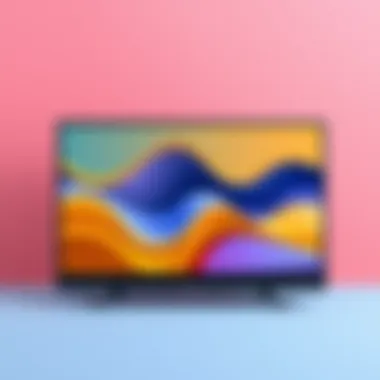
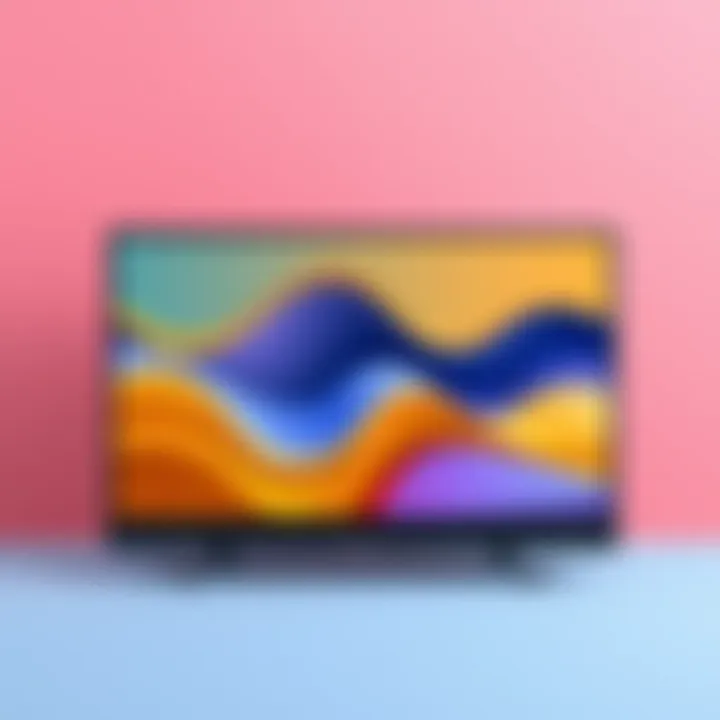
- Check Monitor Calibration: Make sure that your display is calibrated. It’s imperative for accurate color representation. You might find color calibration tools helpful here.
- Use Consistent Lighting: Ensure that the lighting in your recording environment is uniform. Mixed lighting sources can create unrealistic color casts in your footage.
- Export Settings Review: Double-check your export settings. The color profile you choose can significantly affect the final output. For instance, exporting in RGB instead of YUV may yield differences in how colors appear.
- Test Footage: If possible, take a small part of your video and apply the settings you intend to use before exporting the entire project. This can give you a clearer idea of how colors will render.
"A picture is worth a thousand words, but if it’s not the right color, it can speak volumes of confusion instead.”
Finding the right balance in color can sometimes feel like chasing shadows. Therefore, make it a habit to regularly assess your video against a color reference or a color wheel to ensure everything sits right.
Resolving Performance Lag
Experiencing performance lag while editing can turn an enjoyable creative task into a daunting exercise in patience. Lag can stem from various factors including insufficient hardware, complex effects, high-resolution files, or background applications that consume system resources.
To mitigate performance lag, consider these steps:
- Upgrade Hardware: If you find that your system struggles during editing, it might be time to invest in more RAM or a graphic card better suited for video editing tasks. Filmora can work magic on well-equipped machines.
- Lower Preview Resolution: Temporarily reduce the preview resolution. By changing it to half or lower, you can ease the strain on your system while still editing effectively.
- Close Background Programs: Applications that aren't essential for your editing can hog resources. Make it a practice to close unnecessary programs before diving into your work.
- Render Clips: Use the render feature in Filmora to create a smoother playback experience. This can help clear up lag for clips with high visual effects.
Overall, taking these precautions can create a better workflow.
As you navigate these common issues, remember that troubleshooting is part of the editing journey. Addressing them efficiently not only improves your current project but also enhances your skills and confidence for future endeavors.
Exploring Advanced Techniques
When diving into the creative realm of video editing, especially with tools like Filmora, having a solid grasp on advanced techniques can make all the difference. This section aims to illuminate ways you can push the boundaries of your videos through dynamic background effects and multi-layered backgrounds. The beauty of exploring these advanced methods lies in the enhanced richness and engagement they bring to your production, allowing your content to stand out in an increasingly crowded digital landscape.
Creating Dynamic Background Effects
Dynamic background effects breathe life into your videos, making them visually striking and memorable. The use of such effects not only captures your audience’s attention but also enhances the storytelling aspect of your content. When elements move or shift in the background, it adds a layer of interest and keeps viewers engaged, creating a more immersive experience.
One way to create dynamic backgrounds is through the use of animated overlays. These can range from subtle motions, like flickering lights, to more dramatic flowing patterns. For instance, if you're editing a travel video, you could layer a soft wave animation underneath your subject to simulate water moving gently. This approach doesn’t just serve aesthetic purposes; it can convey the mood or theme you want your audience to feel.
Another key component in achieving dynamic backgrounds is tracking the movement within your videos. This involves using Filmora's tracking features to link background elements to more prominent features in the scene. Imagine transitioning a static landscape into an animated one in unison with your subject's movements; it elevates the ambience much more than a standard static shot could ever hope to.
Implementing Multi-Layered Backgrounds
Multi-layered backgrounds represent a powerful technique for creating depth and dimension in video projects. This technique involves stacking several different visual elements in the background, allowing for a rich tapestry of visuals that supports the main subjects without overwhelming them. It’s an avenue to express a narrative more robustly while maintaining viewer interest.
To implement multi-layered backgrounds effectively, begin with the base layer—often a simple color or a subtle image that sets the tone of your video. Following that, you can introduce varying textures or patterns as second layers that might subtly animate over time. For example, consider creating a city skyline that shifts as day transitions into night, adding both an aesthetic charm and contextual cues about the passing time in your story.
Furthermore, make use of opacity and blending modes to ensure layers work harmoniously. By adjusting transparency, you can create ethereal effects where one layer seems to seep into another, yielding a seamless transition that adds to the overall visual intrigue. This nuance can be key when establishing moods, whether it be calm and serene or fast-paced and energetic.
"Using advanced techniques like dynamic effects and multi-layering isn't just about flashy visuals; it's about crafting a compelling story. Every layer, every movement should serve a purpose."
Comparative Analysis of Other Video Editing Tools
In the ever-evolving landscape of video editing, having the right tool can make all the difference. When discussing how to seamlessly change background colors in video projects, it’s essential to not only focus on Filmora but also to look at how it stands compared to other software like Adobe Premiere Pro. This analysis helps in understanding what makes Filmora an attractive choice as well as highlighting the unique offerings of its competitors.
Filmora vs. Adobe Premiere Pro
When it comes to video editing, Filmora and Adobe Premiere Pro are two of the most popular choices among professionals and enthusiasts alike.
- User-friendliness: One of Filmora's primary draws is its intuitive interface. It caters to both beginners and experienced editors. Users can navigate through its features without feeling overwhelmed, which can be a challenge in Adobe Premiere Pro, known for its extensive, yet daunting capabilities.
- Pricing: Filmora offers a more budget-friendly option. The subscription model is attractive for those who may not want to commit to a costly software like Premiere Pro, especially if they are not using it professionally. Premiere Pro does have a free trial, but the monthly fees can add up quickly.
- Features: Premiere Pro boasts a comprehensive list of tools and features ideal for professional-grade editing. It offers advanced multi-track editing, more in-depth color grading options, and integration with other Adobe products, which can make a significant difference for users requiring high-end functionality. However, for basic video editing and effects like changing background colors, Filmora still holds its ground, providing essential tools without the accompanying complexity.
- Creating Effects: While both tools allow for dynamic edits, Filmora simplifies the learning curve to create effects compared to Premiere Pro. Users who want to apply color changes to backgrounds can do so relatively quickly in Filmora, whereas Premiere Pro may involve a steeper learning curve similarly to climbing a mountain.
Evaluating User Friendliness Across Platforms
The appeal of video editing software often hinges on how easily users can access and utilize its features. Ease of use can significantly affect productivity, especially for those who aren’t tech wizards and just want to get to the creative part.
- Streamlined Navigations: Filmora's layout is designed with the end-user in mind, with easy access to core functions like color adjustments. Users can find tools in a layout that is not only logical but visually pleasing. In contrast, navigating through Adobe Premiere Pro's features can sometimes feel like finding a needle in a haystack, requiring more time spent learning the ropes rather than being creative with the content.
- Learning Resources: Filmora provides an extensive library of tutorials and support services that cater to new users. This resource is a treasure trove for those looking to quickly become proficient. On the other hand, while Adobe has a wealth of online resources, the information often presumes a baseline knowledge, potentially leaving less experienced users frustrated.
Overall, the comparative analysis presents a clear picture: While Filmora may not match the high-end functionalities of Adobe Premiere Pro, its user-friendly design and cost-effective pricing make it a formidable contender for many types of video projects. The choice really comes down to the user’s specific needs and level of comfort with technology.
"Choosing the right video editing software can be as vital as the content itself; the tool should enhance creativity, not hinder it."
Whether you are new to video editing or a seasoned pro, understanding these differences can help in selecting the most fitting tool for your artistic vision.
Recommendations for Further Learning
Embracing the art of video editing, particularly the manipulation of background colors, extends beyond just mastering Filmora. This aspect is crucial, as it influences not only the aesthetics of your project but also its impact on viewers. Given the dynamic nature of video editing, continuous learning is essential. In this section, we'll explore various avenues to enhance your knowledge and skills, ensuring you stay ahead in the ever-evolving landscape of video production.
Online Tutorials and Courses
The digital age has ushered in a treasure trove of resources aimed at fostering skill enhancement. One prominent method to further your education is through online tutorials and courses dedicated to video editing. Websites like Udemy and Lynda.com offer an array of lessons tailored for both beginners and seasoned professionals. These platforms provide step-by-step guidance on different aspects of video editing, including background color adjustments.
- Benefits of Online Learning:
- Flexibility: Learn at your pace, choosing when and where to study.
- Diverse Topics: From basic color adjustments to advanced techniques, there's something available for everyone.
- Expert Instruction: Many courses are led by industry professionals, providing insights that are hard to come by elsewhere.
Courses specific to Filmora, such as those found on Skillshare, also dive deep into its functionalities, equipping you with the know-how to exploit every feature effectively. Additionally, platforms like YouTube are teeming with free content, where creators share unique tips and tricks for color adjustment and other editing techniques. This wealth of information can be invaluable in bridging gaps in understanding or refining existing skills.
Community Forums and Support Groups
Another cornerstone of learning exists in community engagement. Online platforms such as Reddit and dedicated Filmora forums create spaces for users to connect, share knowledge, and assist each other in troubleshooting. Participating in forums not only allows for the exchange of ideas but also opens doors to networking with other editing enthusiasts.
- Value of Community Support:
- Problem Solving: Encounter a tricky issue with your video? Bet there's someone who's faced the same challenge and can offer solutions.
- Diverse Perspectives: Discussions bring forth varied techniques and styles, enriching your own approach to editing.
- Networking Opportunities: Connect with fellow video editors, where you can obtain mentorship or even collaborate on projects.
In essence, leveraging these avenues for further learning can significantly augment your capabilities in video editing. Rather than simply learning how to change background colors, you'll cultivate a broader understanding of effective video production, which ultimately leads to more engaging and professional content.
Final Thoughts on Background Color in Video Editing
Changing the background color in video editing isn't just a technical adjustment; it's a powerful tool that can significantly elevate the narrative and emotional resonance of your project. This topic is integral to video editing for several reasons. Understanding how to effectively manipulate background colors can enhance visual storytelling, invite viewer engagement, and establish a thematic cohesion in your work.
One of the clear benefits of altering background colors is that it can completely transform the mood of a scene. For example, a soft pastel might evoke calmness, while a bold red could instigate passion or urgency. The impact of color is not merely superficial; it taps into psychological responses that can determine how your audience perceives your content. Therefore, grasping the nuances of color in film and video can provide your audience with a richer viewing experience, as they are subtly guided to interpret emotions and themes.
"Colors are the smiles of nature." — Leigh Hunt
Furthermore, the importance of personal experimentation cannot be overstated when it comes to finding the right background for your videos. Every editor brings their unique flavor to the table, and experimentation allows for the exploration of various styles and techniques. By testing different colors and approaches, you can hone your individual style, thus making your edits more distinctive and tailored to your vision. Your background choices can serve as a signature in your body of work, something that not only sets you apart but also resonates with viewers who appreciate your unique aesthetic.
In addition to experimentation, considering the context of your video is crucial. For instance, a corporate video may call for a more conservative palette to maintain professionalism, while a creative project might thrive on bold and experimental choices. Balancing personal style with the demands of your content will enhance your effectiveness as an editor.
Ultimately, background color is more than just a visual adjustment; it's a creative decision that carries weight. As technology continues to evolve with tools such as Filmora, understanding and manipulating these aspects of video editing will always be relevant. Whether you are creating vlogs, tutorials, or corporate presentations, these elements will serve as the foundation for making impactful videos that resonate deeply with audiences. The art of video editing is a blend of technical skill and creative vision, and mastering the background can be the key to unlocking that potential.



